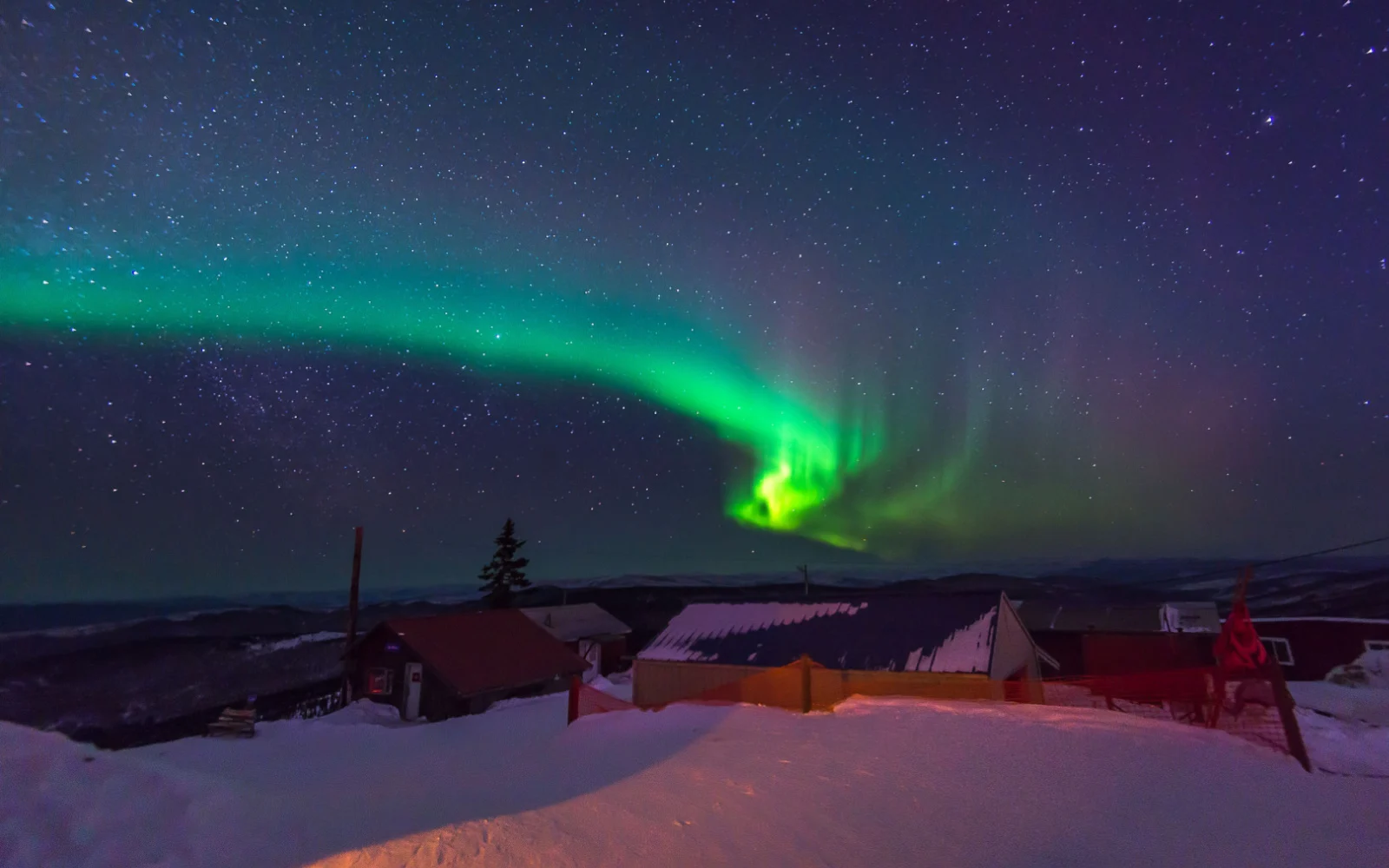What's the best time to visit Fairbanks Alaska?
The best time to visit Fairbanks, Alaska is during the summer months from June to August, when temperatures are mild and the snow has melted, allowing for outdoor activities like hiking and berry picking. Fairbanks experiences nearly 24 hours of daylight in June, making it a great time to visit, but be prepared for higher hotel rates and larger crowds during this popular season.
Fairbanks is home base for many travelers who come to explore Alaska’s vast wilderness, and the city has plenty to do in its own right. Fairbanks is close to several beautiful natural areas where you can see Alaska’s wilderness up close, such as the Chena River State Recreation Area.
The city is a great place to explore Alaska’s history and unique culture, especially the cultures of its indigenous peoples, thanks to institutions such as the Museum of the North.
You can also enjoy quintessential Alaskan activities including visiting a reindeer farm. Fairbanks is a great place to visit, but its attractions differ greatly depending on when you visit. We’ll show you this and more below.
Overall Best Time to Visit Fairbanks Alaska
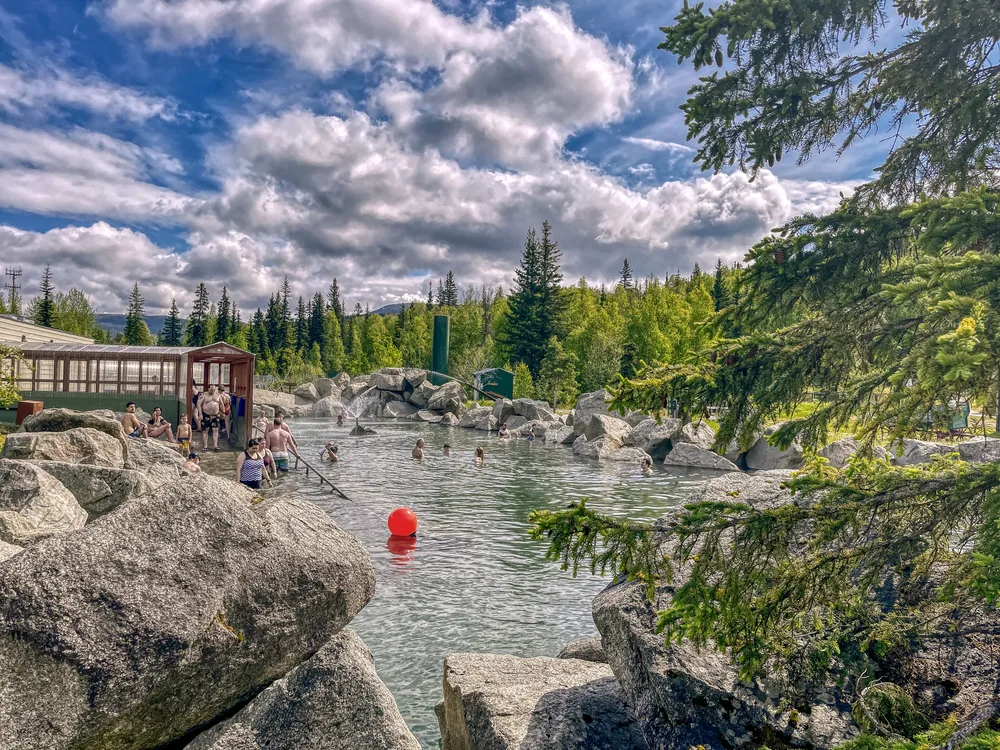
Fairbanks, Alaska, USA 6-20-21 People relaxing in the Chena Hot Springs/Jacob Boosma/Shutterstock
The best time to visit Fairbanks Alaska is during the state’s brief but glorious summer, from June to August, when you can enjoy the great outdoors at its best.
Although most of the year is snowy and bone-chillingly cold, summer offers a welcome respite in Fairbanks. It’s never going to be so hot that you’ll wish you packed your shorts, but at least it will be warm enough to explore without a parka.
In June and July, daily high temperatures are a pleasant 71-73 degrees Fahrenheit. June, July, and August are the only months in Fairbanks when you can’t expect snow, and when the snow that accumulated earlier in the year actually melts.
That means that you can actually go hiking and explore the beautiful nature that surrounds the city because national and state parks are open to the public. Besides standard outdoor activities, you can enjoy Alaska-specific adventures such as berry picking.
Foraging is a state pastime, and peak season for berries is July to September. Fairbanks is so far north that it experiences the midnight sun phenomenon.
In June, the city experiences 21 hours of daylight, and the sun doesn’t set until after midnight. This unique experience is hard to find anywhere else in the world, and it means that you’ll have more time to go exploring since you won’t have to worry about getting caught in the dark.
Locals like to squeeze in as much fun as they can during the days when the weather is warm enough to be outdoors. Summer is the peak festival season in Fairbanks.
Expect music festivals and other fun happenings such as:
- Midnight Sun Festival (June)
- Golden Days Festival (July)
- World Eskimo-Indian Olympics (July)
- Fairbanks Summer Arts Festival (July)
- Tanana Valley State Fair (August)
Summer is the most popular time to visit Fairbanks, and it’s easy to see why since the weather and events are so good. Keep in mind that you will find crowds along all the fun events, and higher hotel rates.
Cheapest Time to Visit Fairbanks Alaska
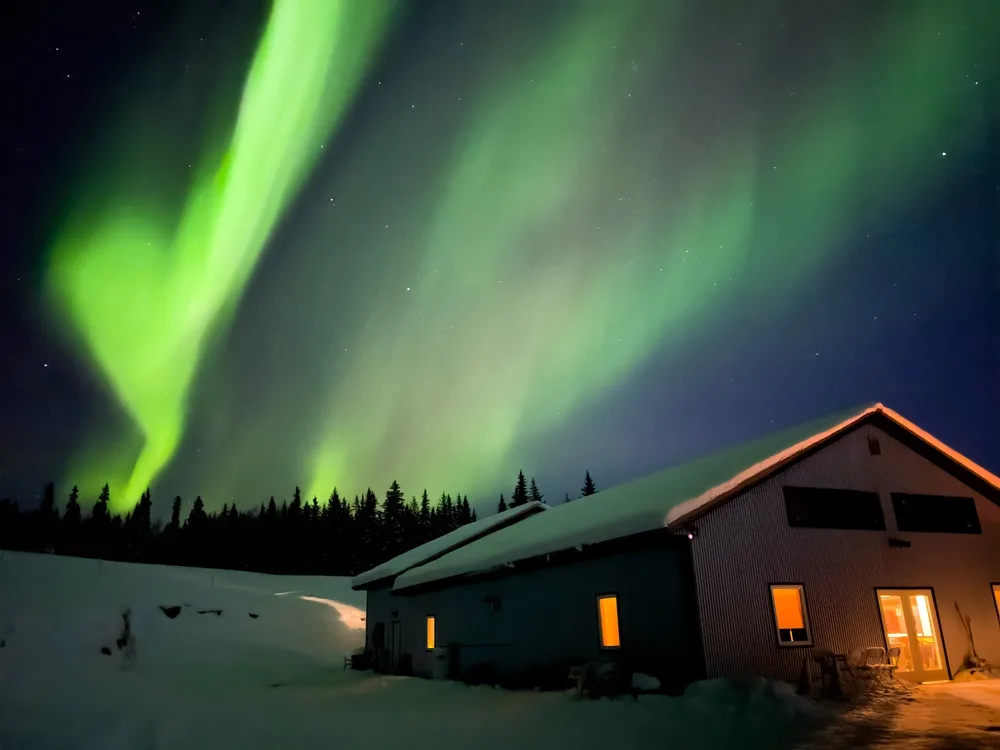
blvdone/Shutterstock
The cheapest time to visit Fairbanks is in the winter off-season, from September to May. The middle of winter, January-February, offers the best deals.
Prices drop drastically in Fairbanks as soon as September rolls around and summer’s heat (and peak season crowds) is gone. You can find very good hotel deals throughout the entire off-season in the city. The absolute lowest prices are usually in January and February.
These months have the lowest tourist demand out of the entire year in Fairbanks. The weather is bitterly cold during this time, just 1 degree Fahrenheit during the day in January. At night, it can get as low as -25 degrees.
There are also the fewest festivals and events, and the least daylight. Dreary winter weather and low demand translate to low hotel prices. You can score great deals in January, with discounts of about 25% compared to peak season prices.
While some smaller hotels close during the off-season, those that remain open usually offer discounts. Getting to Fairbanks is also more affordable during this time.
Domestic flights usually cost the least in January and February, when the holiday high season ends, and airlines offer discounts. You can find good deals on flights well into May.
Least Busy Time to Visit Fairbanks Alaska
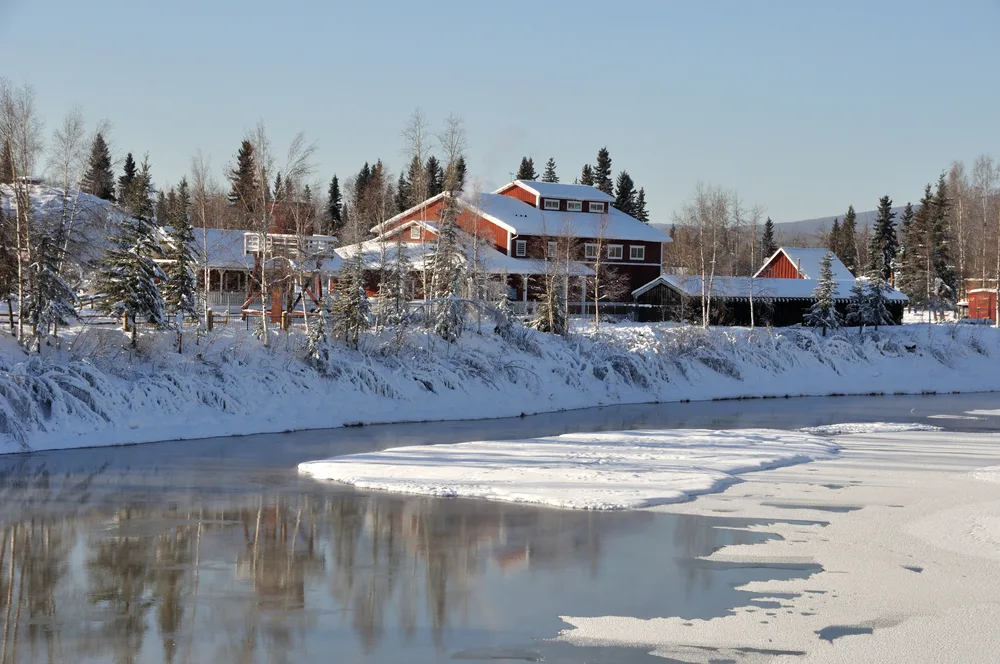
Gary Whitton/Shutterstock
The least busy time to visit Fairbanks is any time during the off-season, from September to May. During this time, you’ll enjoy pleasantly uncrowded trails and events geared towards locals, not tourists.
Most people don’t visit Fairbanks in the winter because they don’t want to brave the extremely cold weather and long nights. However, others believe that you can’t have a true Alaskan experience if you don’t actually experience the winter at least once.
It’s only during this season that you can try your hand at snowmobiling or go on an excursion to see the Northern Lights.
Fairbanks is also pleasantly uncrowded after the hectic busy season of the summer. Many visitors that crowd the streets of the city come from cruise ships, which shut down after winter.
According to sites listing cruise departures, there are no cruises in Fairbanks between mid-September and mid-May, so you will have less crowds to deal with. The off-season doesn’t have uniform crowd levels.
Late February and March tend to see an uptick in visitors since there are many festivals. Although it’s still cold, the days are longer and it’s not as chilly as in January, so locals put on all sorts of festivities to celebrate.
You can expect more visitors, but it’s worth it to attend events such as:
- World Ice Art Championships
- Yukon Quest dog sled race
- Festival of Native Arts
Worst Time to Visit Fairbanks Alaska
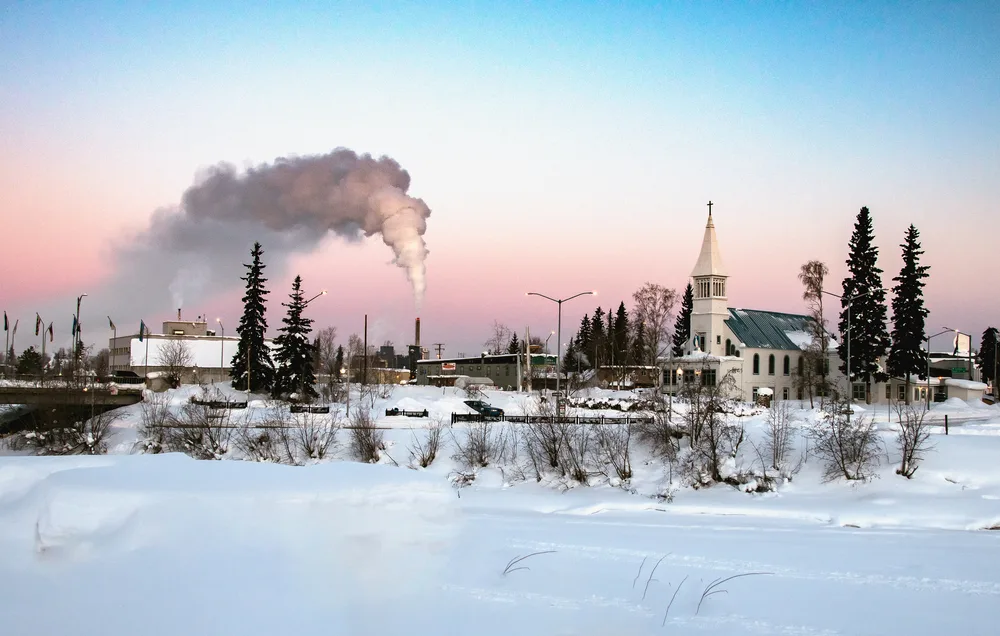
FloridaStock/Shutterstock
The worst time to visit Fairbanks, Alaska is from late autumn to mid-winter, from November to February, when the weather is truly miserable. While you shouldn’t shy away from exploring Alaska’s winter, since it’s such an integral part of living in the state, it’s not for the faint of heart.
Temperatures reach below freezing as early as October, and night temperatures are usually below zero by November. Until February, the chill is usually too much even for locals.
There also isn’t nearly enough daylight to do what you want to do during this time. In late November, there are only about five hours of daylight, and two hours of civil twilight. By December 21st, the sun doesn’t rise until nearly 11:00 AM and sets before 3:00 PM.
The weather in late fall and early winter also tends to be a lot cloudier than later in the season. That means that you can’t even enjoy the best wintertime Fairbanks activity, following the Northern Lights, because it will be too cloudy to see them.
If you do visit during this time, make sure you pack the right gear. With warm winter gear, you can explore even during the coldest days.
Stay for a few days to increase your chances of seeing the Northern Lights and catching a rare clear day. Plus, you can take advantage of the lack of crowds and discounts to schedule popular activities such as snowmobile tours.
Fairbanks by Month: Climate & Activities
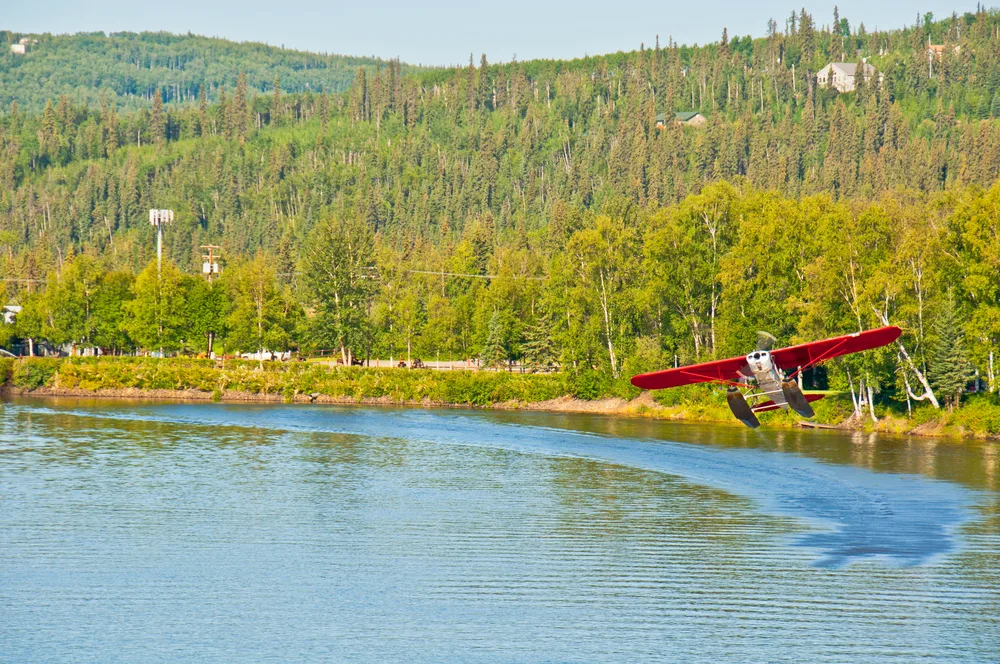
Artincamera/Shutterstock
Still unsure about the best time to visit Fairbanks? Take a look at our summary of the weather and climate by month below:
January
January in Fairbanks is very cold, with temperatures ranging from -11 to 12°F (-24 to -11°C). This month is ideal for viewing the spectacular Northern Lights, participating in the winter fun at the World Ice Art Championships, and enjoying dog sledding through the snowy landscapes.
February
February continues with frigid weather, perfect for attending the famous Yukon Quest International Sled Dog Race, exploring the ice sculptures at the Ice Alaska Park, and experiencing the magical Chena Hot Springs.
March
As spring approaches in March, temperatures in Fairbanks range from 1 to 27°F (-17 to -3°C). March is great for late-season aurora viewing, attending the Open North American Championship sled dog race, and enjoying the Ice Art Championships if they extend into March.
April
Spring temperatures in April range from 16 to 43°F (-9 to 6°C). It’s an ideal time for cross-country skiing as the weather starts to warm, visiting the University of Alaska Museum of the North, and enjoying the onset of the longer daylight hours.
May
May sees temperatures warming up from 34 to 61°F (1 to 16°C). Explore the Creamer’s Field Migratory Waterfowl Refuge, enjoy bird watching as migratory birds return, and experience the Midnight Sun Festival towards the end of the month.
June
Summer arrives with temperatures between 46 to 72°F (8 to 22°C). June offers opportunities for hiking in the nearby Denali National Park, attending the Midnight Sun Festival, and enjoying outdoor activities like fishing and rafting under the extended daylight hours.
July
July maintains mild temperatures from 54 to 73°F (12 to 23°C). It’s a popular month for exploring the Pioneer Park, enjoying the Golden Days Parade celebrating Fairbanks’ gold rush history, and taking riverboat tours on the Chena River.
August
Temperatures in August range from 46 to 68°F (8 to 20°C). Visit the Santa Claus House in nearby North Pole, Alaska, explore the Georgeson Botanical Garden, and enjoy the Tanana Valley State Fair for local foods and entertainment.
September
As fall begins, temperatures range from 36 to 55°F (2 to 13°C). September is perfect for enjoying the fall colors, particularly in Denali National Park, experiencing the early starts of the aurora season, and fishing for Arctic grayling.
October
October sees cooler temperatures from 21 to 38°F (-6 to 3°C). Enjoy the increasingly frequent Northern Lights displays, explore the local art galleries and museums, and experience the first snowfalls of the season.
November
Fall temperatures in November range from 5 to 21°F (-15 to -6°C). This month is ideal for winter sports like snowshoeing and cross-country skiing, enjoying the beginning of the holiday season, and cozying up in local cafes.
December
Winter brings cold temperatures ranging from -4 to 12°F (-20 to -11°C). December offers the magical winter experience with Christmas celebrations, viewing the Northern Lights, and participating in winter activities like ice fishing and dog sledding.
Frequently Asked Questions
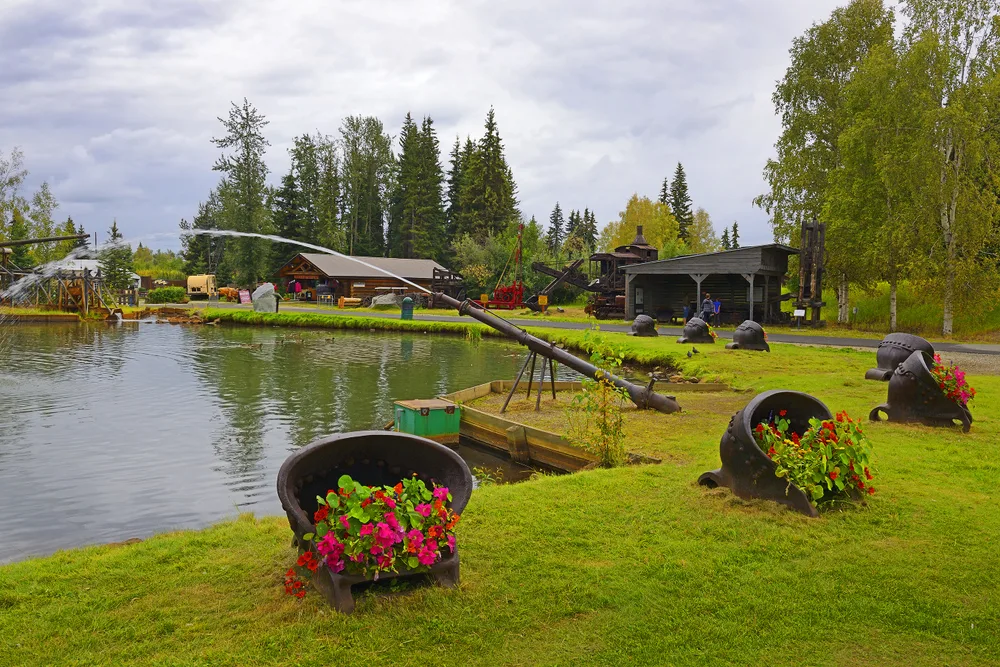
FAIRBANKS, ALASKA, USA – AUGUST 2, 2018: Gold Ruch Town in Pioneer Park. The city park commemorates early Alaskan history with multiple museums and historic displays on site/Pecold/Shutterstock
Here are a few of the best questions people have asked about visiting Fairbanks:
What's the best month to see the northern lights in Fairbanks Alaska?
The Northern Lights are visible from late August to late April. The best month to see them is March, which has the clearest skies.
When should I go to Fairbanks?
You should go to Fairbanks in the summer if you want to go hiking and exploring the Alaskan wilderness. If you want to see the Northern Lights, you should go in the winter.
How many days do you need in Fairbanks Alaska?
You should spend two or three days in Fairbanks Alaska. If you’re planning day trips to nearby national parks, such as Denali, make sure to budget for more time.
When is the best month to visit Alaska?
The best month to visit Alaska overall is July. Temperatures are at their warmest, and the landscape is fully thawed.
How often can you see aurora in Fairbanks?
During the aurora season (late August-late April), you can see it four or five times a week. This varies based on several factors, including the phase of the moon and the weather.
So, What’s the Best Time to Visit Fairbanks?
The best time to visit Fairbanks Alaska depends on what you want to see. If you want to go hiking in nearby national and state parks, summer is the best time to visit. If you want to see the aurora borealis, then winter is your best bet, especially March.
So, with so much to see and do and plenty of amazing times to visit, what are you waiting for — book your trip today and experience for yourself all that Fairbanks has to offer. Happy travels!



